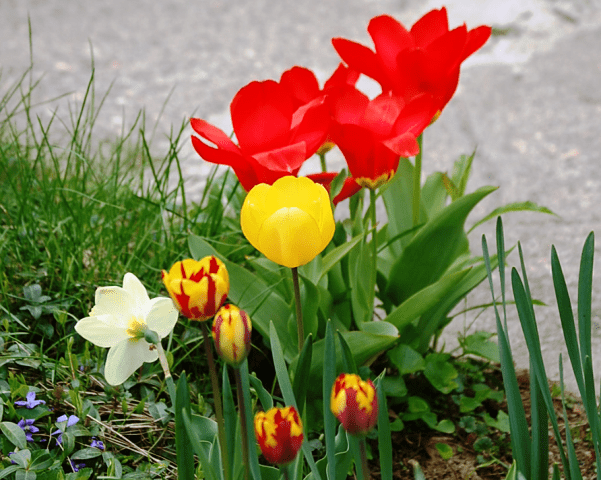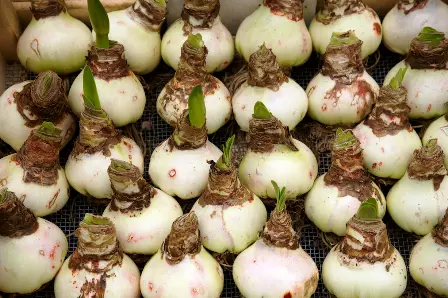Tulips, with their vibrant colors and elegant blooms, are a favorite among gardeners and flower enthusiasts alike. While purchasing tulips from a store can instantly brighten up your home, there’s something special about growing these beautiful flowers yourself. Fortunately, with the right techniques and a bit of patience, you can cultivate tulips from store-bought flowers and enjoy their splendor in your own garden. This comprehensive guide will walk you through the step-by-step process of growing tulips from store-bought bulbs, ensuring a successful and rewarding gardening experience.

Understanding Tulips:
Before diving into the cultivation process, it’s essential to understand the basics of tulips. Tulips belong to the genus Tulipa and are native to regions with temperate climates, such as Europe, North Africa, and Asia. These perennial plants typically bloom in spring, producing cup-shaped flowers in a wide array of colors, including red, pink, yellow, purple, and white. Tulips thrive in well-drained soil and prefer full sunlight, making them an excellent addition to gardens and landscapes.
Selecting Store-Bought Tulips:
When purchasing tulips from a store, it’s crucial to choose high-quality bulbs to ensure successful growth and blooming. Look for bulbs that are firm, plump, and free from any signs of mold or damage. Avoid bulbs that feel soft or shriveled, as they may be unhealthy or past their prime. Additionally, select tulip varieties that are suitable for your climate and growing conditions, considering factors such as bloom time, height, and color preferences.
Preparing for Planting:
Once you’ve selected your store-bought tulip bulbs, it’s time to prepare them for planting. Start by choosing a suitable location in your garden with well-drained soil and ample sunlight. Prepare the soil by loosening it with a garden fork or shovel and removing any weeds or debris. Consider amending the soil with compost or organic matter to improve fertility and drainage, as tulips thrive in nutrient-rich soil.
Planting Tulip Bulbs:

Planting tulip bulbs is a straightforward process that requires careful attention to spacing and depth. Begin by digging a hole or trench in the prepared soil, making sure it is deep enough to accommodate the bulbs. As a general rule of thumb, plant tulip bulbs at a depth that is approximately three times their diameter. Space the bulbs several inches apart to allow room for growth and proper airflow.
Gently place each tulip bulb in the hole with the pointed end facing upwards and the flat side down. Press the soil firmly around the bulbs to secure them in place, ensuring good soil-to-bulb contact. Water the newly planted bulbs thoroughly to settle the soil and provide moisture for root development.
Caring for Tulip Bulbs:
After planting, it’s essential to provide proper care and maintenance to encourage healthy growth and blooming. Water the tulip bulbs regularly, keeping the soil consistently moist but not waterlogged. Avoid overwatering, as excessive moisture can lead to bulb rot and other problems.
Fertilize the tulip bulbs periodically throughout the growing season to supply essential nutrients for robust growth and flowering. Choose a balanced fertilizer formulated for flowering bulbs and follow the manufacturer’s instructions for application rates and timing.
Mulching around the base of the tulip plants can help conserve moisture, suppress weeds, and regulate soil temperature. Apply a layer of organic mulch, such as shredded bark or compost, to a depth of two to three inches, taking care to leave space around the stems to prevent rotting.
Protecting Tulips from Pests and Diseases:
Tulips are relatively low-maintenance plants, but they can be susceptible to certain pests and diseases. Keep an eye out for common garden pests such as aphids, slugs, and snails, which can feed on tulip foliage and flowers. Use organic pest control methods such as handpicking, insecticidal soap, or neem oil to manage pest infestations without harming beneficial insects or the environment.
Additionally, be vigilant for signs of fungal diseases such as gray mold (Botrytis) or tulip fire (Botrytis tulipae), which can affect tulip bulbs and foliage. Ensure good air circulation around the plants by spacing them adequately and avoiding overcrowding. If necessary, treat fungal infections with fungicides labeled for use on tulips, following the instructions carefully to minimize environmental impact.
Monitoring Growth and Development:
As the tulip bulbs begin to grow and develop, monitor their progress closely to ensure optimal conditions for flowering. Keep an eye out for signs of stress or nutrient deficiencies, such as yellowing foliage or stunted growth, and take corrective measures as needed.
As the tulip flowers begin to emerge, provide support if necessary to prevent them from bending or breaking in windy conditions. Use bamboo stakes or plant supports to gently prop up the flower stems, taking care not to damage the emerging buds or foliage.
Enjoying the Fruits of Your Labor:
With proper care and attention, your store-bought tulips will reward you with a spectacular display of colorful blooms in the springtime. Take time to appreciate the beauty and fragrance of the flowers, and consider cutting a few blooms to enjoy indoors in vases or floral arrangements.
After the tulip flowers have faded and the foliage begins to yellow and wither, allow the plants to die back naturally. This process allows the bulbs to replenish their energy reserves for the following growing season. Refrain from removing or cutting back the foliage until it has completely yellowed and dried up.
Conclusion:
Growing tulips from store-bought flowers is a gratifying experience that allows you to connect with nature and enjoy the beauty of these iconic springtime blooms. By following the steps outlined in this guide and providing proper care and maintenance, you can cultivate healthy and vibrant tulips in your own garden. With a little patience and attention to detail, you’ll soon be rewarded with a stunning floral display that will brighten your outdoor space and bring joy to your heart.
MORE POSTS: A Guide to Successfully Overwintering Mums
